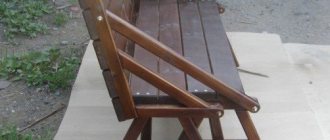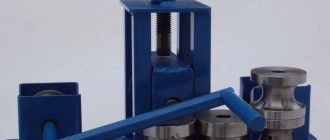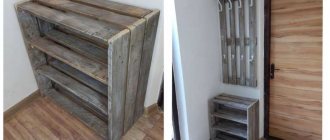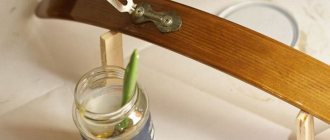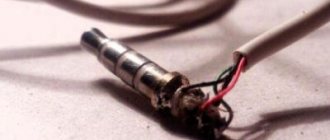How to handle a hamster?
Gaining your hamster's trust will take patience and some time.
However, all the efforts spent on this will pay off in full - communication with your pet will bring you only joy. What are the do's and don'ts when handling hamsters? It is forbidden:
- make sudden movements or wave your arms near the hamster;
- pick up a hamster that has just woken up or is sleeping;
- drive into a corner or cover with palms;
- scream loudly near the cage;
- leave it on high surfaces - it does not distinguish distances and will definitely fall down;
- grab by the scruff of the neck with a rough movement.
Can:
- talk to the animal in a soft, calm voice;
- when picking him up, do it slowly and carefully, clasping him under the front paws;
- touch the hamster only with clean hands and give him the opportunity to sniff your hand first - this way he will quickly get used to your smell;
- Give him a chance to calm down if he is scared.
Making complex adventure games
Young children will not be able to make complex tunnels for hamsters with their own hands; they will definitely need the help of adults. But teenage boys will cope with the task with a bang!
Tunnel made of plastic bottles
Plastic soda and juice bottles are found in every home. But not everyone knows that they can be used to make a tunnel for a hamster. For this purpose, containers with a volume of 0.5 liters are better suited. If the rodent cage is the place where the tunnel will lie, then only 3-4 bottles will be needed. For an external attraction, you can choose any quantity. All bottles should first be freed from labels and washed thoroughly so that they do not smell.
When building a bottle attraction, follow the plan below:
Trim the top and bottom to create a cylinder. A stationery knife is better suited for this purpose. There will be sharp burrs on the bases of the cylinder, which can injure the fluffy, so they must be masked. To do this, cover the sections with electrical tape. Cut round holes in two cylinders of equal diameter
It is important that the size of the circle matches the diameter of the bottle you will attach to it. Cover the edges with electrical tape. Now prepare the parts that will act as branches
One of the ends of the bottle must be squeezed and the corners cut off at a slight angle. When you release the bottle, it will straighten out, and the cut will acquire two smooth notches, thanks to which the part will fit tightly to the cylinder with the hole. We do the same with the second bottle. Don't forget to tape the edges! Now it's time to make 2 T-shaped connections. Place a bottle with a wavy edge against the hole in the cylinder, wrap the connection with electrical tape, and then wrap the supporting part. To make the structure more durable, repeat this operation twice. Now fasten the T-shaped connections together with the same electrical tape. The bottle maze is ready to use!
Wooden labyrinth
If you are patient and careful and have woodworking skills, try making a hamster tunnel with your own hands from wood. Sanded boards or plywood are suitable for this purpose. This attraction is safe for hamsters; they will happily run along the intricate passages.
A wooden tunnel can be made large in order to play with animals there and organize hamster races. If cage space allows, install a three-tier wooden labyrinth for your pets. Of course, you will have to work hard cutting out windows and stairs, but your pet will be happy. When creating such a small attraction, it is better to use special wood glue rather than nails.
Now you know how to make a tunnel for a hamster with your own hands, using available materials that are always at hand. By building a room with partitions for your touching furry, you can not only play with him, but also develop your pet’s intelligence.
Expanding space and horizons outside the cage
Is it possible to walk a hamster?
The rodent is walked in the house or on the street. At home, the hamster explores its owner and unfamiliar places. A walking ball will provide additional benefits for physical health. To prevent the pet from running away, a person should set up restrictions. For example, build a rectangle out of cardboard.
Walking outside
The rodent will happily explore the lawn, flower garden, and courtyard of a private house. The hamster needs to be allowed to run around and stretch its legs. But such walks often result in the pet running away from the territory. Here are some tips to help you properly organize your hamster walk:
- Monitor your surroundings carefully. The furry pet should not be attacked by dangerous predators - raven, rat, cat, dog, tit;
- remove dangerous objects containing toxic substances and heavy metals from the walking area;
- remove painted wood products from the lawn;
- Decorative and simple flowers should not grow nearby;
- use a leash or walking ball. The first option is more attractive: the hamster freely explores the world far outside the cage.
Making simple tunnels
A hamster cage must contain at least one small tunnel. And for games outside the home, complex structures of medium and large size are suitable. You can make a permanent entertainment room for your furry friend or build the attraction anew each time, changing its size and direction of moves.
Children are showing great interest in creating entertainment for hamsters. We invite you to study the instructions for creating simple tunnels that even a schoolchild will understand.
Paper tube for cage
The simplest option is to use a cardboard paper towel tube as a building material. You can put it in the cage unchanged or make windows in the tube so that the animal can come out through them.
The sleeve tube can also be installed in external cardboard labyrinths.
Game room
Do your kids love to play with and watch hamsters? Then give them an idea: make a tunnel for a hamster from an unnecessary cardboard box. The kids will happily get down to business, use their creative imagination and create an attraction with love.
There are a lot of construction options. We will tell you how to make a hamster maze in two different ways.
- The first method does not involve the use of glue. Take a box and pieces of cardboard: 3 strips should correspond in size to the length of the room, 5 to the width. On long pieces, make 5 cuts at equal distances from each other, and cut short pieces three times. Between the cuts, cut out doors, windows and holes for pipes. Now we can assemble our room. Install long partitions with the cuts up, and insert short parts into them with the cut down. You will get a lattice. If you have pipes planned, insert them into the round cutouts. Place the grid in the box and you can start playing right away!
- The second method is based on gluing the walls. It is good because you can create a variety of branches, as well as a rest room for a small creature. To glue the walls, use regular or construction tape.
Labyrinth from a construction set
Preschoolers and schoolchildren love to build various castles and fortresses from construction sets. Invite them to make an attraction for a hamster - they will happily complete this task. Moreover, children themselves know how to make a labyrinth for a hamster from Lego constructors interesting and convenient.
If you are building a walker for a dzhungarik, small parts are better suited. For the larger Syrian breed, use medium sized pieces. Using a small construction set inside the maze, you can build a small obstacle course for the animal, at the end of which you can place a tasty nut.
Book fortress
Old hardcover books are suitable for creating a large, spacious tunnel. To do this, they need to be placed with their roots facing up. It is better to completely enclose the space with books so that the hamsters do not run away in different directions. For one animal, the width of the passage can be 5-8 cm (so that the animal can easily turn around in it), but if you have several fluffies, the tunnels should be more spacious.
In such a book fortress, kids really love to have hamster races. Rodents are placed in a common closed room, after which they open the “door” and watch which of the animals gets to the exit first
At the same time, it is important to ensure that race participants do not violate the rules. If a cunning hamster climbs over the wall, he must be brought back
A maze made from books can also be used to train animals. To do this, you need to place small pieces of tasty food along the chosen path, and repeat the operation several times with the same route. Then you should place the treat only at the exit. You will be surprised how quickly your smart hamster will find it!
Tunnel made of plumbing parts
If your apartment has recently been renovated and you still have unnecessary parts for connecting pipes, use them to create a branched labyrinth! This attraction is suitable for both small Djungarian and larger Syrian and Caucasian hamsters. By the way, the tunnel made from plumbing looks very original. Another advantage is the collapsible design of the attraction, which means you can periodically change the direction of the moves.
Making it is very simple: connect the parts in any direction. It will be more interesting for the hamster to play if there are several exits in the pipe. But in this case, do not leave the home unattended, otherwise you will have to look for it throughout the apartment!
What to do if your hamster runs away?
First and foremost, isolate other pets that could cause harm to the fugitive. Next, remove, if any, all dangerous and poisonous objects that a rodent can get. (for example, sharp objects on the floor, poison from cockroaches, etc.)
Where to look for a hamster?
Don't worry and remember that hamsters are very curious and love to explore everything carefully. If you immediately notice the animal is missing, it means that it is somewhere nearby exploring new places.
You should inspect the apartment in the following order:
- surroundings of the cell;
- places near pieces of furniture (places under the sofa, behind the closet, under the table, etc.);
- directly pieces of furniture (in the closet, in the desk drawer, in the laundry basket and in other containers);
How to lure out a fugitive?
It is not always easy to find a hamster by inspection - there may be too many objects in the apartment, or you do not have access to cracks and openings (for example, due to immovable furniture). In this case, it’s easier to lure the hamster out using a trick: pour his food in a visible place, put his favorite toy, call your pet affectionately, and other methods described below.
How to catch a hamster?
If you find your pet, don’t immediately run to it with open arms. The hamster does not feel comfortable outside the cage, so any sudden movement will be an additional signal of danger for him.
If your baby is too active or timid, you can throw a waffle towel over him. In this case, the rodent's movements will be limited, and you can easily catch it.
Methods for catching a hamster
Tunnel made of plastic bottles
Hamsters love closed spaces, similar to burrows. Therefore, plastic bottles are ideal for making a walking maze. In addition, this material is affordable and safe. You just can’t use containers from household chemicals, so as not to harm your pet’s health.
To work you need:
- plastic bottles of any capacity,
- stationery knife,
- scissors,
- insulating tape,
- scotch.
Master Class:
- Wash and dry the bottles thoroughly and remove the stickers from them.
- Take one container and make two holes on its opposite sides. The large hole should be equal to the diameter of the bottle, the small one - its neck. To do this, you need to make a cross in the wall of the bottle with a knife, and then finish the job using scissors.
- Cut a hole near the neck of the second container. Its size should be sufficient for the hamster to pass freely. The sections should be wrapped with electrical tape to prevent the rodent from injuring its paws while running.
- From the second container, you need to unscrew the cap and insert the bottle neck through the large hole, and then through the small one. Then you need to tighten it again.
- In a similar way, you should lengthen the tunnel to the desired size. If desired, you can also make several spacious areas using five-liter bottles. One platform is for a running wheel, the second is for a drinking bowl and feeder, the third is for a container with sand or toys. And of course, you need to remember to cut an entrance hole for the hamster.
Types of hamsters that can be kept at home
Of the variety of hamsters, only a few species are kept at home.
Below are the most common domestic hamsters and their photos.
Pre-Asian hamster
The most popular species for keeping at home is the Central Asian or Syrian hamster (Mesocricetus auratus). Very little is known about its life in the wild. In 1839, the first representative of this species was described, found in the Syrian desert. For a long time it was believed that the pre-Asian hamster was extinct, but in 1930 a female and her litter were captured in Syria and then taken to Israel. A single family in captivity quickly multiplied, and the species was introduced to pet owners in the 1940s.
Today the Syrian hamster is one of the most popular pets.
He is quite unpretentious, has a calm character, and what is very important, rarely gets sick
The body length of the Syrian hamster does not exceed 14 cm, and its weight is 250 grams. The animal's tail is so short that it is practically invisible due to its fur. Its natural color is golden, although breeders have developed a large number of color variations: if desired, it is not difficult to find white, beige, gray and even black animals. In addition to the solid-colored varieties, patterned types have been developed: tortoiseshell (with large white, yellow spots, and tricolor), with a white belt around the body, and spotted. Eyes may be black, red or pink.
However, breeders went further and bred animals with three other types of coat, each of which can have different colors.
In the photo below, the so-called “Angora” hamster is essentially the same Syrian, only long-haired.
The Syrian hamster, with its thick, tousled, wavy fur and curly mustache, is called the royal hamster.
With the satin type, the coat is short, smooth, and surprisingly shiny.
Djungarian hamster
Another popular species for home keeping is the Djungarian hamster (Phodopus sungorus). It is smaller in size than the Syrian (its body length is 7-10 cm), but is even more active at night.
The external feature of this species is a narrow black stripe running along the animal’s spine. Its coat is not very long, with white patches.
Roborovsky's hamsters
This dwarf species has a body length of no more than 5 cm, the tail is hidden in a thick fur coat. The fur of the Roborovskiy hamster (Phodopus roborovskii) is golden sandy in color; A characteristic feature is the white brow ridges in the form of a mask. In nature, they live in Mongolia and Northern China.
They are great pets to watch, however, they are not as friendly as Syrians and are more difficult to communicate with. They are very nimble, can make amazing jumps, but are not able to sit on their hands for even a second.
And if it is better to keep Syrian and Djungarian hamsters one at a time, since in a confined space they will fight among themselves, then Roborovsky hamsters can be kept in pairs and groups - they are not aggressive towards their relatives.
Campbell's hamster
These hamsters are similar in appearance to Djungarian hamsters, differing from them in a thinner and more diffuse stripe on the back. In addition, Campbells (Phodopus campbelli) can be spotted, and their fur is not smooth, but in tufts.
In nature, they are found in Kazakhstan, Mongolia, and northern China. In Russia they inhabit Transbaikalia, Buryatia and Tuva.
Thanks to breeders, domestic Campbells can have a variety of colors; in nature, the color of their fur coat is dark gray with a brownish tint.
A little about ferrets
Recently, more and more often animal lovers choose a ferret as a pet. This animal is very funny, cute and to some extent exotic. And this choice is quite logical. Firstly, ferrets are very cheerful creatures, you won’t get bored with them, there is no end in sight to the games and fun. Secondly, the ferrets are very compact, for some this is a significant advantage, since they can be very easily transported on various trips.
Ferrets, despite the fact that they are nocturnal animals, can quite easily adapt to the life rhythm of their owner. There is no need for daily walks with these animals, like, for example, with dogs. If you decide to take your ferret for a walk, getting him accustomed to a harness won’t cause much trouble. They treat the owner friendly, get used to it well, unlike cats, but without fanaticism, like dogs. It is also worth noting that ferrets are distinguished by their extraordinary inquisitiveness of mind, intelligence and cunning.
Among representatives of the same species, you can find animals with completely different manifestations of character, therefore, you can choose a more suitable type for yourself, from super active to calmer.
Rules for feeding Syrian hamsters
The owner of a hamster must know what to feed his pet and how to do it correctly. To do this you need to have an idea about their lifestyle.
Diet
Hamsters are animals whose greatest activity occurs in the evening. Be sure to take this into account when creating a menu for your pet. It is better to divide the entire daily diet into two parts: it is recommended to give the smaller part in the morning, and the larger part in the evening.
As for drinking, the hamster should always have clean water at room temperature freely available. For this, it is better to purchase a special drinking bowl. It is not recommended to place a bowl of water in the cage - an active animal will quickly knock it over. In addition, debris will constantly fall into it.
Vitamins for golden hamster
Pet stores sell special vitamin complexes for rodents. As a rule, they are available in liquid and solid form. Vitamins in liquid form can be added to the drinking bowl, and in solid form - in food. The first option is more convenient, but also more expensive.
You can put a mineral stone in the rodent's cage. It helps the hamster grind down its incisors, improves digestion and supplies the body with essential minerals. Hamsters usually gnaw on such stones with pleasure.
There are also chalk stones on sale that supply the body with calcium and other trace elements. They can be either regular or with various additives - herbal or fruit. Such stones are especially useful for pregnant females. Under no circumstances should you give your hamster regular school chalk - it is not food grade and can therefore be dangerous for the small rodent.
How to avoid digestive problems?
The hamster's diet should be balanced. If you buy ready-made food and mixtures, be sure to check the expiration date.
Hamsters love to hoard food, and rotten food can cause digestive problems. Therefore, from time to time it is recommended to check the hidden places of the cage and throw away any spoiled food.
Typically, adult and healthy hamsters do not suffer from indigestion. If your pet still has problems, try giving him boiled broken rice for diarrhea or a little vegetable oil for constipation. And be sure to review your hamster’s menu so that digestion returns to normal.
It’s good if the food has a protein component
Sand for bathing
Degus need to regularly take sand baths to cleanse their fur of sebum and to get rid of excess moisture. Any container can be used. It is recommended to place a bathing suit in the cage every day, but you can reduce the number of such baths to two or three per week. The container should not be kept in the enclosure all the time, because it will quickly fill with garbage, and the degus will use it as a toilet.
We suggest you familiarize yourself with: Automatic drinkers, nipple drinkers for chickens
Ordinary sand is not suitable for these animals. It is too rough for them and can damage their delicate skin. Therefore, you should purchase a special mixture for bathing chinchillas at a pet store.
Signs of hamsters appearing in a summer cottage
Wild species of rodents are not afraid of humans. Fighting hamsters in the garden is a troublesome task. If there is a lot of food in your area, then the animal will live peacefully and often not in one copy.
At a time when his reserves are in danger, he can put up violent resistance and attack a person, protecting his bins.
Signs of a rodent appearing in a suburban area are:
- Presence of holes and tracks.
- Numerous passages and paths along which animals move.
- Digging for tubers.
- Damaged fruits or their remains after being eaten.
- The bark at the bottom of trees or bushes has been eaten.
A single effective method of exterminating wild hamsters has not yet been invented. Everyone chooses for themselves the most acceptable method from many existing ones.
Keeping rodents in a terrarium
As with an aquarium, a terrarium has its pros and cons, which will help the owner decide on a suitable home.
- A hamster feels much more comfortable in a terrarium than in an aquarium. A tray that blocks the pet’s view and makes it less timid;
- You can pet your pet without taking it out of its home;
- Garbage from the terrarium does not spill out of it, so cleaning is easier.
- Air enters only from above;
- Relatively small field for games and entertainment;
- Difficulty installing drinking bowls and hanging treats.
Situation
Decide on the size and design of the terrarium, check the quality of the product and think about the location of the accessories in advance.
- It is better to purchase a drinking bowl with suction cups or choose a durable, heavy material that the hamster will not be able to move;
- Place the small house and wheel;
- Hamsters are very fond of all kinds of labyrinths and buildings, so you can install structures made at home in the terrarium.
Choosing a terrarium for a hamster
Choose models that provide ventilation. Buy the option made of inorganic glass: it does not fade or scratch, so it will last a long time. There is no need to calculate the correct dimensions, since everything in the finished structure is distributed symmetrically.
How to equip a cage yourself
Home accessories
A rodent cage must have:
- house;
- running wheel;
- ladder;
- drinking bowls;
- feeder;
- toys.
All accessories for a hamster can be easily found at any pet store.
Educational toys for hamster
Hamsters are very energetic and therefore require additional ways to spend their time, namely rodent toys.
There are several types of toys. Some are suitable for grinding teeth, others can be climbed on and played hide and seek, and others can be chased around the entire cage, as if playing football.
The video shows an excellent example of a DIY hamster maze.
Drinking and eating facilities
For drinking water, it is better to use special drinking bowls that are attached to the wall of the cage. The saucer may not be stable and litter will fall into it.
Some feeders are also hung on the wall of the home, so that pets will not knock them over. If the breeder prefers a bowl that is not attached, then it is better to choose a ceramic one, it is more stable.
Toilet
Pet stores sell special toilet corners that are mounted in the corner of the cage. A corn filler is suitable for them, which does an excellent job of eliminating unpleasant odors.
Sand bath
Animals use sand to keep their fur and paws clean.
A sand bath is not a necessary item in the cage, but the rodent will be happy to have it.
You cannot use sand from the street. You can use this product for chinchillas, the main condition is the absence of talc.
Any container is suitable for this purpose; the filler layer should be 2-3 cm.
Hamster bedding
It is very important to use quality bedding. The hamster will dig in it and relieve itself
Most often, breeders use sawdust, which is poured in a layer of 6 cm.
Home accessories
In order for the rodent to like the house and for the baby to grow up healthy and active in it, the housing needs to be filled with suitable accessories.
Drinking and eating facilities
It is very important to choose the right feeder and water bowl for your rodent.
There must be a special drinking bowl in the house for drinking. You can make it yourself or use a bowl, which should be covered so that food or parts of the bedding do not fall into it. Small species of hamsters like to dig up pieces of food, so you can put them in the bedding. Large specimens require a stable food bowl that is difficult to tip over.
It is better to provide 2 containers - one for wet food and the other for dry food. Rodents usually like to sit in the feeder, so it should be spacious enough
It is also important that there is a separate “pantry” for supplies that the hamster will definitely make. This could be a container in a secluded corner of the house
The hamster himself will “tell you” where his hiding place is, you just have to watch him carefully and then place a bowl there.
Hamster bedding
Bedding is very important for keeping the house clean and creating comfort and coziness. It can be pressed sawdust, but not too small so that it gets into the baby’s nose or gets tangled in his fur.
If wood pellets are used, they should be odorless and quickly turn into dust. Sawdust from coniferous trees can cause allergies in the animal, and fabrics and cotton wool are dangerous because they can tear into fibers in which the hamster can become entangled.
The best bedding materials for a hamster in a house are pieces of corn cobs with kernels, which can also be buried. Paper napkins or white unscented toilet paper are suitable for this.
The floor layer should be at least 6 cm deep, because hamsters love to play and burrow into it. When it gets colder, its thickness increases. It needs to be cleaned daily and changed once a week. A little granules from the previous bedding should be added to the fresh litter so that the familiar smell remains, otherwise the animal will become nervous.
Toilet
Hamsters are known for their cleanliness, so they need a separate place in the house for the toilet. You will have to clean it daily, removing waste and adding clean bedding. A cardboard tray is well suited for this purpose; this material is replaced quite often, because... it absorbs urine well, partially absorbing its odor.
The litter filler is often special clean sand, which the animal likes to rummage in, scattering it around. But sand does not hold odors well, so it needs to be changed often. Cat litter or mineral granules are not suitable for this - they can cause poisoning or allergies in your furry friend.
Sand bath
This is an important element of equipping a house for a hamster that does not like water treatments. They are successfully replaced by bathing in special sand for chinchillas. To clean the fur from grease and dirt, place a high container with a ladder in the house. Let's assume an option with a hole cut in the side. It is closed on top with a lid that prevents the contents of the container from spilling out. The volume of the bath should be twice the size of the furry pet, and its sides should be high enough.
How to make a house with your own hands?
Making your own house for a pet helps to unite the family. The most common materials for construction:
Coconut shell. Dwarf hamsters will appreciate your efforts when they receive an original coconut shell house for use. The Dzungarians will be happy to hide in it and relax.
Plastic cage for hamster
Rules for peeling the insides of a nut:
- open the eyes of the coconut and drain the milk through them;
- tap next to the eyes with the blunt side of a knife or a chop mallet and when a crack appears, remove part of the shell using a knife or hacksaw;
- place the fruit in the freezer for half an hour, which will make it easier to separate the pulp;
- remove sharp corners and burrs, sand the edges of the hole.
- Lego. An unnecessary children's construction set will serve as a wonderful building material for a pet's home. The number and type of Lego parts will determine whether you will have to limit yourself to a modest house or whether you will be able to build a real castle. It may be possible to build a fence, fence off a playground and build a staircase.
Important! Gluing joints will help achieve maximum strength.
- Cardboard box. Miniature animals will willingly use houses that are made for them from used packaging. Even a small owner can cut out an entrance in a cardboard container. Ventilation holes are also welcome. If you have a tissue box with a ready-made hole, just cut it into two halves. You can use a toilet paper roll at the entrance as a corridor. The disadvantage of a cardboard house is its fragility.
- Parcel box. It is not particularly durable, but such containers can only be slightly modified, and plywood can be easily adjusted. All you need to do is drill an entrance on the side of the box, windows and paint the house - if desired.
Important! You can paint an animal’s home only with non-toxic paints: watercolor or gouache
- Stand for toothbrushes. The oval object is laid on its side and fixed. Other available materials can also serve as suitable materials for equipping a dwarf hamster’s house: bowls, basins, jars for bulk products, food containers, plastic bottles, flower pots.
- Plastic containers for cereals. It happens that a hole in cans of this type is already provided. If the lid is solid, you can simply cut it in half to provide your pet with passage inside. The round jar should be secured.
- Glass jar. Durable and easy to clean dishes that are sure to please owners. But not all pets are optimistic about transparent shelters, preferring to hide in a secluded place. The situation is corrected by painting or gluing the jar, which then must be attached to the walls of the cage with wire. Before pouring the bedding, the slippery surface of the bottom is smeared with glue and sprinkled with sand.
- Branches. Suitable for creating a kind of cave. The cardboard strip is glued to the floor with short sides like an arched roof, which is glued on top with pieces of thick branches and blocks. The back wall can be made of cardboard or sewn up with branches. The second option: the base of the house is made of a ready-made box or a home-made frame, which is then covered with twigs on top.
- Popsicle sticks. This idea of building a hut for everyone’s favorite will be more useful to city dwellers, since in city conditions it is difficult to collect a sufficient number of even branches. First, each detail of the house is drawn on cardboard and cut out with scissors. Then, the elements of the hut are fixed to each other using tape and the blank is glued on the outside with ice cream sticks.
- Wooden boards and plywood. Using the previous sketch, you can build a wooden house with a flat or gable roof. This time, the parts are cut out of a board or sheet of plywood and attached to a frame made of wooden blocks with nails or self-tapping screws. If the roof is removable, this will greatly facilitate the cleaning process.
Wooden houses
Wood is an environmentally friendly material, and in the wild, “fluffies” often encounter it. Therefore, a wooden house is a good choice for a pet. The surface of such housing is rougher than that of a plastic one, which allows the hamster to climb up the wall to the roof.
In pet stores you can find “bedroom” models with a flat or shaped roof. Some wooden houses resemble an ordinary doghouse, only in miniature. However, more beautiful models are also sold, in the design of which ice cream sticks or other wooden elements are used.
Depending on the size of the housing and its design features, the cost of such a “bedroom” is quite affordable for most livestock farmers (60-100 rubles).
Ideas on how to make a comfortable house for a hamster - diagrams, drawings and instructions
From plastic bottles
Option 1. To make a shelter for an animal from plastic bottles, you need 2 clean bottles of 1-1.5 liters, electrical tape, scissors and a stationery knife.
The neck and bottom of both containers are cut off, and the cut points are treated with electrical tape to prevent the occupant from being injured in the future. A hole is cut in one of the bottles exactly in the middle, equal to the diameter of the second.
The second container is inserted into the finished cutout of the first container; it should fit tightly. The resulting structure is secured with electrical tape.
Option 2. Such a house can replace a cage and will be like an aquarium with several compartments.
Several clean bottles with a volume of 5 or more liters are required. Each of the containers will represent a so-called room, so the number of containers used is limited only by the imagination of the master. You will also need a utility knife and scissors.
- The tops of the bottles are cut off. The height of future rooms should be such that the pet cannot climb over it and get lost in the bowels of the apartment.
- The necks are cut off from the remaining upper part of the bottles so that they look like funnels. You won't need caps for them.
- In the lower part of the container, almost at the very bottom, holes are cut, equal in diameter to the necks.
- All rooms are connected to each other through funnel necks.
In the video you can see what such an apartment looks like.
Does your pet live in a house made of natural materials? Poll Options are limited because JavaScript is disabled in your browser.
From cardboard
For construction you will need the most ordinary boxes of ready-made breakfasts or juice, scissors and a stationery knife.
All you have to do is cut the box to size and cut out the entrance.
If you use toilet paper rolls or paper napkins for construction, you will get an excellent labyrinth that rodents love so much. But you should take into account the size of the hamsters; for large individuals this type of entertainment is unacceptable.
From a box of paper napkins
For a simple construction, you will need one cardboard tissue box, stationery glue and a toilet paper or paper napkin roll.
It is necessary to remove all plastic elements and film from the future home. It is better to give preference to square-shaped containers; they can be cut exactly in the middle and you will get two ready-made houses that already have an entrance for the animal.
A toilet paper roll makes a great addition to your shelter. It is enough to glue it into the passage and it will be an imitation of a mink, which will obviously please the rodent.
From a plastic container
This type of container can be found in almost any home or purchased for a small amount in a store.
For construction you will need a food grade plastic container and a soldering iron.
- Using a heated soldering iron, the entrance to the house is cut out, and holes are made on the lid of the container for ventilation. This will help the pet feel comfortable in the home.
- Sawdust or any other bedding is laid out at the bottom of the house.
The advantage of such a structure is that it is convenient to wash, and it will also last longer than cardboard.
Wooden house
For construction you need:
- wooden board 1-4 cm thick;
- ruler;
- a simple pencil;
- circular saw or jigsaw;
- sandpaper;
- hammer;
- small nails.
Two parts 12.5 cm long and two parts 14.5 cm long are cut out and polished from the board. The height is taken arbitrarily, but it must be calculated so that the hamster can move freely.
A hole with a diameter of 6 cm is drilled (cut) in one of the 12.5 cm long blanks. Several small windows are made in different walls of the house for better ventilation. All cut holes are ground.
All parts are assembled using nails. You can use a square wooden sheet for the roof.
Mitten house
During the cold period, any living creature likes to bask where it is warm. Rodents are no exception.
During severe cold weather, it is enough to put a mitten that no one needs anymore in the cage. The hamster will instantly find a use for it and build his nest in it.
The downside of such a house is that it will most likely quickly acquire an unpleasant odor and wear out. Whether to replace it with a new one or not is up to the breeder to decide.
Coconut house
Due to its size, this type of housing is suitable only for Djungarian hamsters.
You will need:
- coconut;
- knife;
- hacksaw;
- sandpaper.
First, you need to drain the milk from the coconut by making holes in the eyes. Having stepped a couple of centimeters away from them, you need to tap with the handle of a knife; if a crack appears on the shell, then this part of the fruit is cut off with a knife, if not, then you should use a hacksaw. The pulp is completely cleaned. The cut edge is sanded with sandpaper.
Made of wood
Wood is often used as a base. A wooden house for a guinea pig will last a long time and will not harm the animal due to the natural nature of the material. A rodent can use such housing to grind its teeth, so it is not advisable to choose oak, plum or cherry wood because of the harmful substances in it for the pet. Still, the tree has a certain series of disadvantages:
- If the material is not treated, pests will settle in it;
- the weight of the house will be quite large, which will make some actions difficult;
- the color palette when choosing is limited;
- if you do not remove the sharp parts: burrs and splinters, the animal may be injured;
- It is not easy to clean such material, which causes bacteria and an unpleasant odor to accumulate.
To make a wooden house for a guinea pig, treated boards or plywood are used. The size of the house and its entrances should be calculated depending on the volume of the pig
It is important that she does not get stuck in the passage and can move around calmly. Such a house should be intensively processed: hammer in all the nails, leaving no heads or sharp ends, and also polish all burrs on the walls so that the pig does not get hurt
Construction stages:
- You should prepare all the necessary parts of the structure and make drawings of the future house, not forgetting the entrance and windows. It’s better not to make the bottom, this will make cleaning up after the animal much easier.
- Transfer the dimensions from the drawings onto plywood and cut out the components of the home. The optimal volume for a home will be 45X35X25 cm.
- Process the resulting parts carefully, leaving no burrs.
- Use nails to connect the structure. It is necessary to drive the nails in so that the head and sharp tip do not remain, otherwise the animal will be injured.
It is important to pursue not the pleasant appearance of the design, but its functionality and convenience
Interpretation of famous dream books
Over the millennia, the experience and research of magicians and soothsayers has accumulated; modern psychologists give their assessment of dreams. The influence of dreams on a person’s future has been proven by world scientists and researchers. The meanings of night images may contradict each other, since with the development of civilization the worldview of mankind has changed:
The interpretations of famous psychologists and seers of both modern times and past centuries are still relevant today. The modern dream book has synthesized many years of data and associates the hamster with material wealth. A well-fed and shiny rodent characterizes the dreamer as a wealthy and thrifty person, prone to stinginess. Actions with an animal and observation of its behavior decipher the dream in a certain way. Keeping a happy and healthy animal in a cage means success in business, but a dead animal means failure and bankruptcy.
Ancient Greek soothsayer Aesop
According to the ancient writer and public figure, the dream indicates a search for solutions to the problem. He associates a large number of animals with monetary profit and treasure. A hamster bite indicates losses and expenses; the vision provides an opportunity to prepare and avoid mistakes. There is no need to rely on others and put aside savings in advance.
If an animal climbs on an object or over an obstacle, then this symbolizes an obstacle in reality on the way to achieving the goal. And the real outcome of the event depends on whether the rodent overcomes the obstacle.
Buying an animal on the market means meeting a rich person who will not share his experience and knowledge. Watching a hamster eat is an unexpected gift or income. You need to carefully observe those around you, so they will influence the future. Hand feeding is a new profitable business. A conversation with an animal prophesies the revelation of a secret.
Very simple model for children
Starting from 6–7 years old, a child is able to independently master simple origami models. And one of the first things he will definitely want to do is a hamster, because it is a popular pet. To realize your creative idea, you will need a 10x10 cm square, colored pencils or watercolors and a marker.
Step-by-step instruction:
- Fold the square from top to bottom.
- Divide the resulting rectangle into three parts. Bend it 2/3 way.
- Fold the lower left corner along the dotted line.
- Using the reverse fold, we bring it inward.
- Rotate the lower right corner.
- We do the same with the left one.
- We form another reverse fold at the top right.
All that remains is to draw colored spots with paint, and also use a marker to draw the hamster’s face.
Very simple model for children
Starting from 6–7 years old, a child is able to independently master simple origami models. And one of the first things he will definitely want to do is a hamster, because it is a popular pet. To realize your creative idea, you will need a 10x10 cm square, colored pencils or watercolors and a marker.
- Fold the square from top to bottom.
- Divide the resulting rectangle into three parts. Bend it 2/3 way.
- Fold the lower left corner along the dotted line.
- Using the reverse fold, we bring it inward.
- Rotate the lower right corner.
- We do the same with the left one.
- We form another reverse fold at the top right.
All that remains is to draw colored spots with paint, and also use a marker to draw the hamster’s face.
Peculiarities
In natural conditions, rodents are constantly moving. In this way they protect themselves from predators and look for food. Hamsters living indoors must also constantly move to maintain physical fitness. An active lifestyle is also necessary for the excellent mood of pets.
The animal must have several toys. The cost of some of them can be high, in this case you can collect available materials and please your pet with interesting crafts. The number of toys can be any, the main thing is that there is enough free space in the cage. It is best to make several different products.
Varieties
All toys that are chosen for pet rodents are aimed at two tasks:
In some products, these two purposes can be successfully combined. It is worth noting that the treat for the hamster is safely hidden. To get to a tasty treat, you need to go through a maze or cope with a tricky structure. The smell of food is an additional incentive to go through the maze or perform other actions.
Other products that do not hide food are considered exercise equipment. The most common toy of this type is the running wheel.
Source
